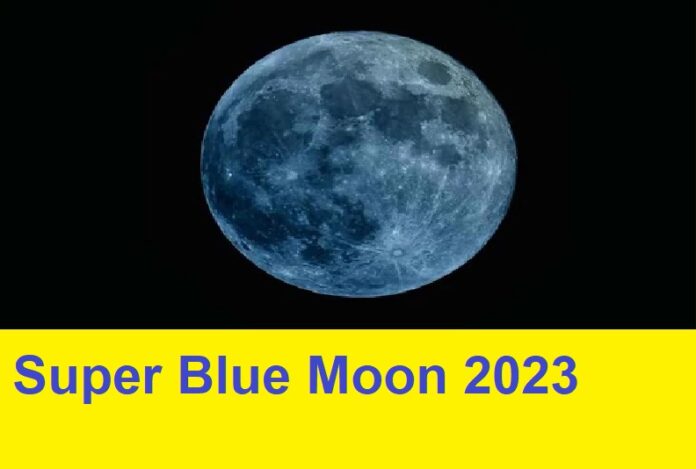Prepare to be awestruck by a very unique celestial spectacle as the super blue moon appears on the nighttime canvas on August 30. Here’s a step-by-step tutorial to understanding the blue moon.
The Super Blue Moon 2023: An Exciting Event
The extraordinary “once in a blue moon” celestial spectacle is scheduled to light the heavens on August 30th. Mark this day on your calendar and be sure to look up to see the gorgeous super blue moon. This Wednesday features a twin celebration, with Raksha Bandhan observed during the day and the largest and brightest moon of the year visible at night. The peak viewing period is expected to be 9:36 p.m. ET (7:06 a.m. IST). Despite its name, the moon will not be blue; instead, it will be a fascinating orange tone. While this is an exciting prospect, it’s reasonable to wonder: What precisely is a blue moon, and how frequently does this enthralling phenomena grace our nocturnal landscape? Don’t worry, we’re here to satisfy your curiosity. Continue reading to learn more about this cosmic wonder.
The Blue Moon Code
The phrase “blue moon” may conjure up images of azure beauty, yet there are two separate definitions, neither of which concerns the moon’s color. According to NASA, a seasonal blue moon occurs when a season contains four full moons, the third of which is known as the blue moon. This conforms to the traditional definition of a blue moon. A monthly blue moon, on the other hand, refers to the occurrence of a second full moon during a single calendar month. Surprisingly, this interpretation resulted from a misunderstanding of the original meaning.
Time and Date offer an intriguing viewpoint, claiming that the concept of a monthly blue moon has evolved into an accepted definition rather than being confined to myth. However, it is critical to understand that the moon completes its phases every 29.5 days, culminating in 12 cycles in around 354 days. With a year of 366 days, an unusual occurrence occurs every two and a half years: the existence of a 13th full moon. This extra full moon is dubbed a “blue moon” since it deviates from the regular naming pattern.
The Blue Moon’s Scarcity
The arrival of a blue moon is quite spectacular. Every 29 days, we are treated to a full moon. Given that most months last 30 or 31 days, a month may have two full moons. Blue moons appear only once every two and a half years, indicating their rarity. Interestingly, the year 2018 defied expectations by having two blue moons within a two-month period, one of which coincided with a lunar eclipse! Furthermore, the cosmos occasionally bestows upon us an even more unusual occurrence: the simultaneous alignment of a blue moon and a super moon. This exceptional alignment will not occur again until January and March 2037, a period of 14 years.
The 2023 super blue moon promises to be an unforgettable spectacle, illuminating the night sky. While the word “blue moon” does not refer to the color of the moon, it does refer to a unique and intriguing event. Whether you’re an experienced skywatcher or new to celestial phenomena, this forthcoming event provides an excellent opportunity to marvel at the cosmic wonders that surround us. So mark your calendar, assemble your loved ones, and get ready to behold the stunning super blue moon in all its splendor.
Remember that the wonders of the world are limitless, and each uncommon event, such as the blue moon, reminds us of the magnificence that lies beyond our earthly bounds. Take a minute to connect with the cosmos and absorb the beauty of the universe in all its forms as the super blue moon casts its bright glow.


